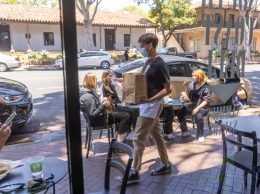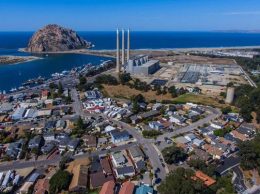
The pandemic was bad, but without business assistance in the form of the federal Paycheck Protection Program, it could have been so much worse for local businesses.
REACH — the Regional Economic Action Coalition, a San Luis Obispo-based economic development nonprofit — released a report May 19 that examined the impact of the pandemic on businesses in San Luis Obispo and Santa Barbara counties, as well as the effects recovery programs have had on the region.
One of the key findings was that even though businesses are starting to recover, there’s a lot to recover from. In February 2021, business revenues remained 32% lower than they were before the pandemic. Revenues were at least 20% below normal lower throughout most of the pandemic, aside from a brief period in October, when COVID-19 cases declined and the state briefly relaxed many public health restrictions.
REACH’s study found that in February, when the region was still under the state’s strictest tier of shutdown orders, 2 of every 5 Central Coast businesses had closed since the start of the pandemic.
As horrific as those numbers are, the reports found that PPP loans likely prevented it from being worse. Nearly 14,000 businesses in the region received a total of $1.5 billion in loans, with the tourism, hospitality, agriculture, food and recreation sectors each receiving more than $211 million.
If there’s a bright side, it’s that the report found entrepreneurialism is already starting to come back.
“We expect there to be a lot of churn and change in terms of business births,” said Josh Williams, the founder and president of BW Research, which conducted the study for REACH.
The report clustered jobs into three segments: the lowest earners, who earned up to about $35,000, the middle earners, between $35,000 and $90,000, and the highest earners, above $90,000. There was virtually no impact to people who earned more than $90,000, but in lower-paying industries like tourism and hospitality, almost half the jobs were lost.
“The people who are least likely to be able to afford a disruption in employment and least likely to be able to afford to continue to live on the Central Coast are the ones who were most likely to have lost their jobs,” Williams said.
Williams presented the main findings of the report during a May 19 webinar. He also discussed factors like the decline in workforce participation. School closures were a major part of that — around 40% of working adults said they had to alter their schedules to help their children learn when schools closed down, and many say their schedules are still being impacted.
The webinar also focused on the American Rescue Plan and how communities along the Central Coast can benefit from it. Aside from the direct stimulus payments to households, the plan has earmarked $55 million in funding for San Luis Obispo County and $86.6 million for Santa Barbara County.
Ray McDonald, the executive director of the Santa Barbara Workforce Development Board, and Dawn Boulanger, the director of the SLO Workforce Development Board, pressed the need for regional collaboration.
“Our businesses cross lines, as do our workers,” Boulanger said. “Working regionally just makes sense.”
Tackling issues as a region will help counties use the money more efficiently. Bruce Katz, the director of the Nowak Metro Finance Lab at Drexel University, urged communities to figure out not just their priorities but also the areas they can leverage for better results.
The Rescue Plan funding won’t come all at once, and it won’t all be from the same source. It’s not a blank check for the counties to spend however they see fit. That said, Katz advised, there is flexible funding available, and he encouraged community leaders to take advantage of it where and how they can.
Katz also spoke of the need for private and philanthropic capital to assist with the Rescue Plan funding. New and existing businesses will want to take advantage of the reopening to attract more clients and opportunities, but may need additional help to get there.
“Find one thing to work together on and collaborate on it, across government and sectors,” Katz said.
There’s also a challenge of using both public and private means to reach out to and work with Black and Latino business communities, he said, which have been historically underserved and are more likely to have suffered under the pandemic.






 Print
Print Email
Email

















